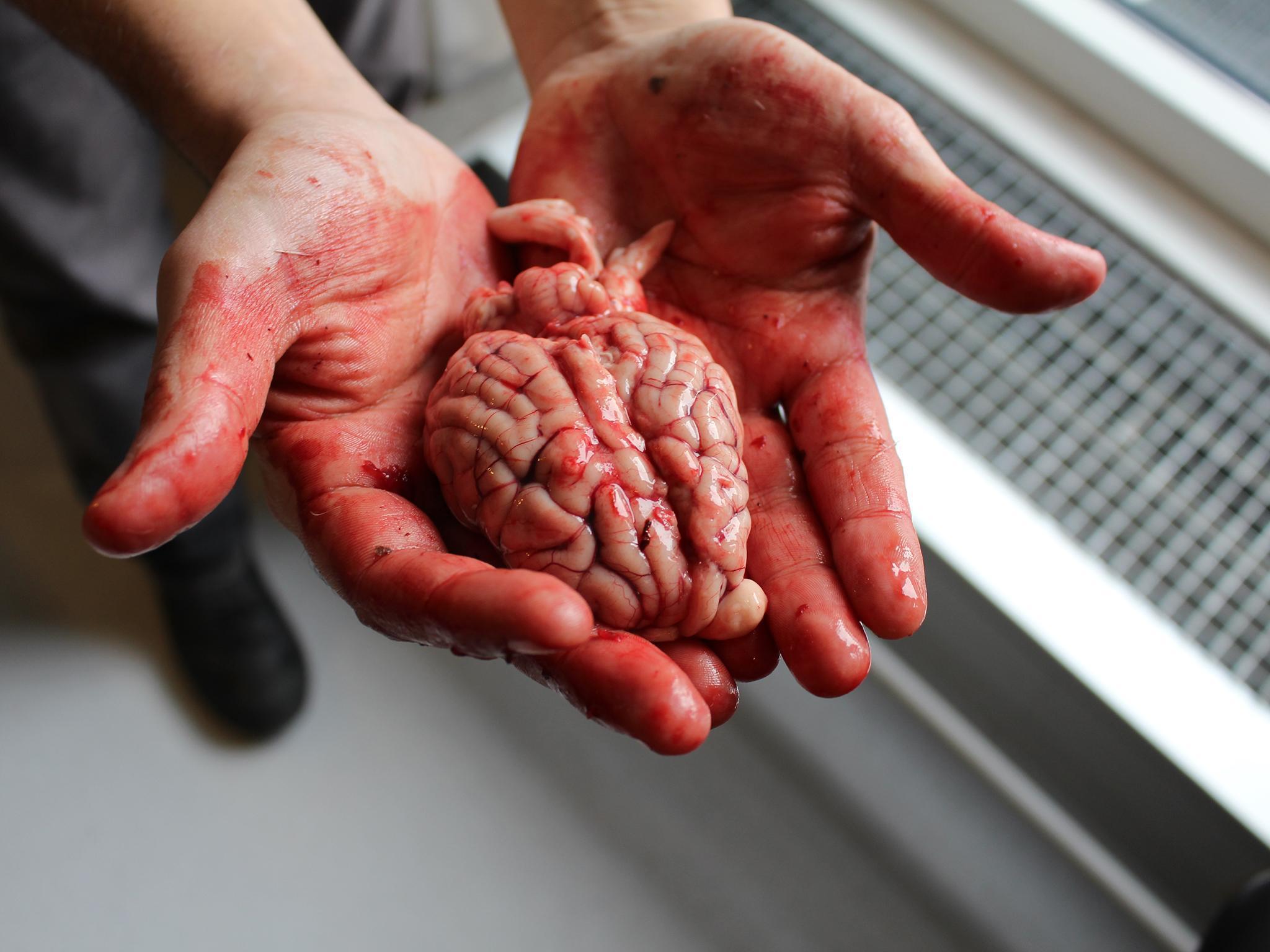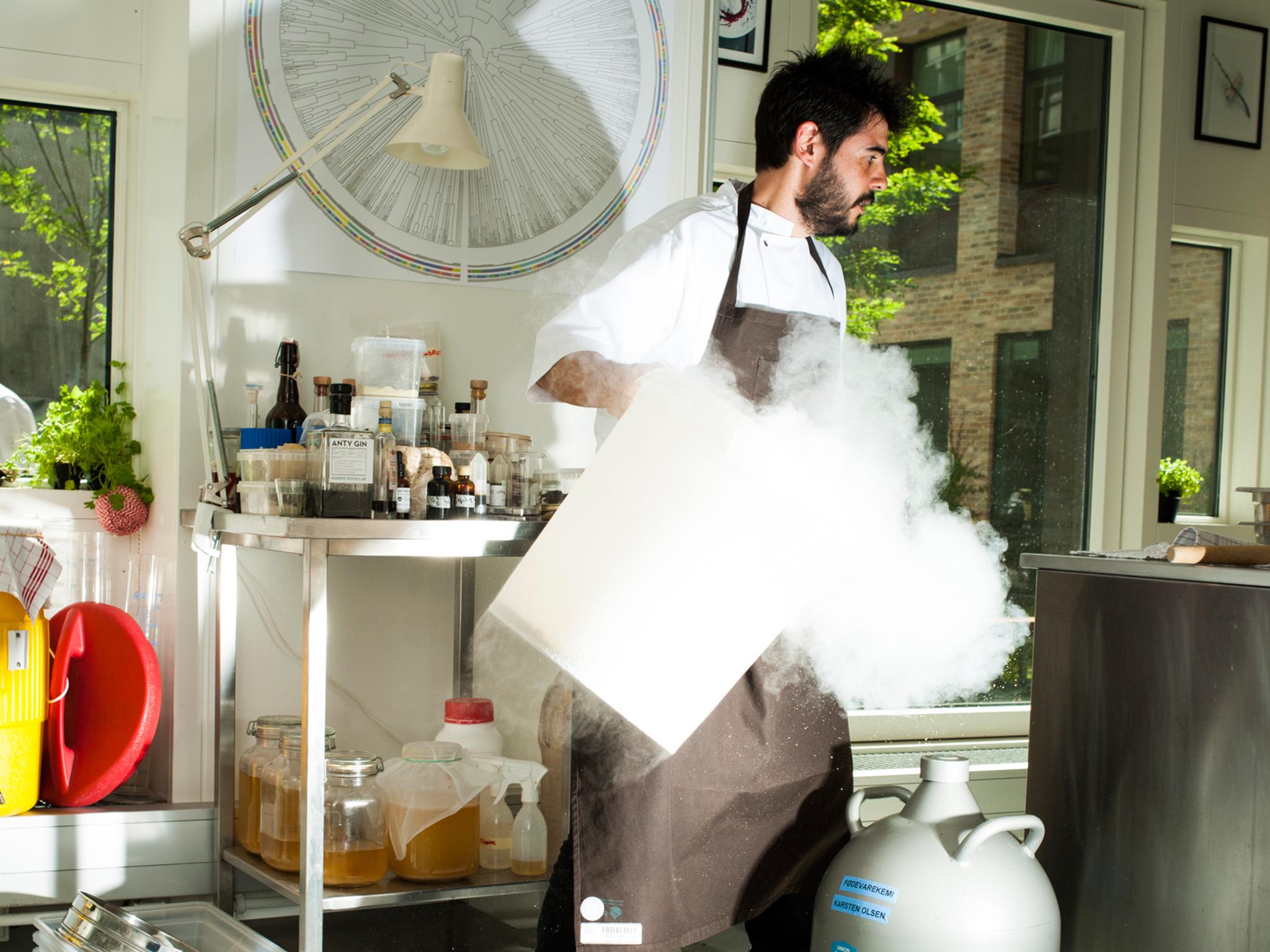The Nordic Food Lab wants you to eat blood, insects and brains to save the world
The laboratory started out in a boat in Copenhagen in 2008. Almost a decade later, they are determined to transform how we view our food

Insects, blood and faeces may not sound particularly appetitising, but they are among the produce we should consider eating if we want our food to be sustainable and healthy, according to a team of chefs and scientists in Denmark.
The Nordic Food Lab was set up on a boat in the Danish capital of Copenhagen in 2008 by Michelin-starred Noma head chef René Redzepi and culinary entrepreneur Claus Mayer to better understand the flavours and the gastronomic potential of Scandinavia.
But in almost a decade – and now based at a laboratory at the University of Copenhagen – its researchers are travelling the world to piece together a holistic approach to eating. Scientists, artists chefs, designers and specialists in education are all rolling their sleeves up and getting stuck in to the cause.
“We try to work with every type of produce. Insects, blood, jelly fish, fermented products that sometimes smell and develop mould, and the products look rotten,” explains Roberto Flore, Head of Culinary Research and Development at the lab. “It’s about giving people more confidence with different produce and reconnecting with process of producing food."
“One of the main problems with sustainability is we are completely disconnected to food," he argues. "We don’t know how it is produced or to how handle certain products. That is a huge problem, and we risk losing knowledge collected over thousands of years in the next few decades. It’s important for us to document this knowledge and make it available to the world.”
Currently, researchers are working on how to make edible insects – from ants to larvae – more appetising to the uninitiated.
Other experiments have explored how animal blood, and its coagulating properties, could be used as an egg substitute as intolerance to the kitchen staple is one of the most common among child in Europe. (The result of that test were not entirely disgusting-looking blood pancakes and meringues, and an arguably more appealing black forest gateaux.)

Its members never shy of controversy, one recently argued in a Munchies article that faeces should be explored as a source of food. After all, young elephants, hippos, koalas, rabbits and pandas eat their mother’s faeces to introduce useful microbes into their digestive systems. And evidence shows that a diverse microbiome in the gut is vital for our health.
While the prospect may sound appalling, similar techniques are already being harnessed. Caterpillar faeces is fermented and used to flavour rice in Japan, says Flore, and kopi lowak, which is digested by the civet, is the most expensive coffee in the world.
“At the moment, gastronomy that is high-quality and sustainable is only available for people who are in the position to buy luxury produce. We want good food available for everyone. That is our main goal.”
Flore admits that he had to transform how he viewed food since working at the food lab, but said that his trips across the globe have given him a new perspective on eating, and on what is truly edible and inedible - rather than what sort of grosses us out.
The lab also has a broader aim to make people more open to other cultures. After all, one man’s creepy crawly is another man’s delicacy.
“Embracing other cultures is one of our main aims. Recognising other cultures and someone else’s values teaches us something and changes our approach to food. We are living now in an international system and we should really recognise ourselves as world citizens."
Join our commenting forum
Join thought-provoking conversations, follow other Independent readers and see their replies
Comments